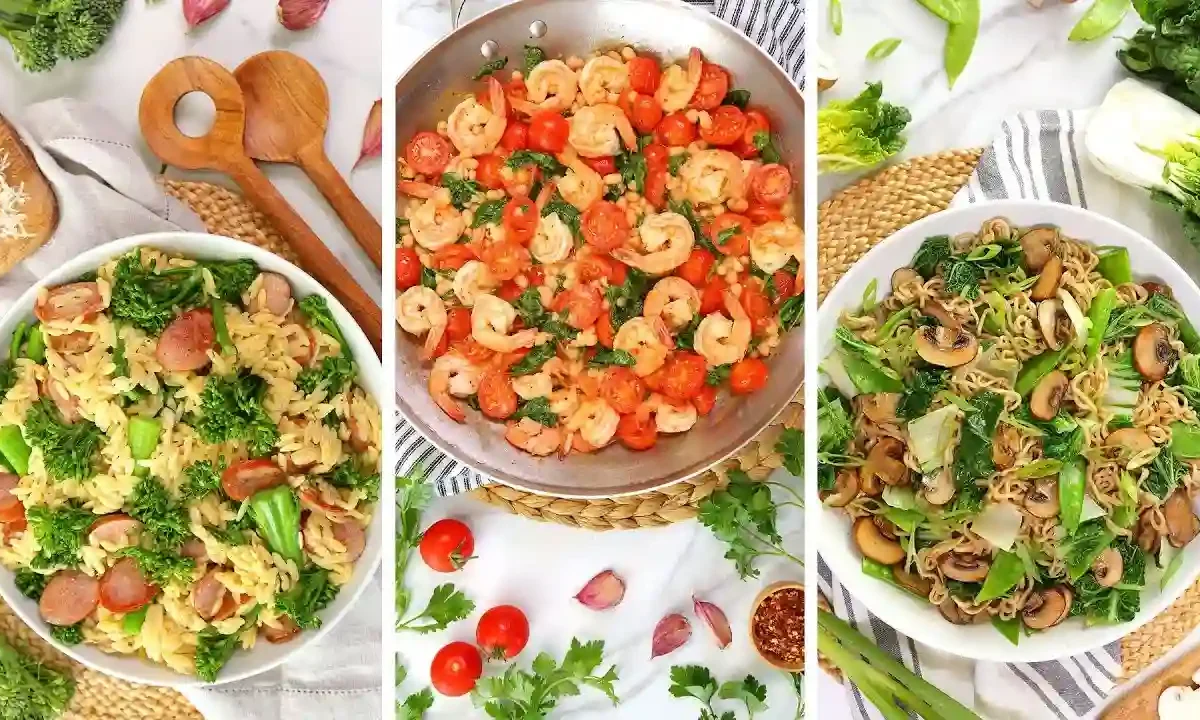In the quest for healthy eating, spices play a pivotal role. They not only pack a punch in terms of flavor but also boast numerous health benefits. Exploring global spices can transform a simple, healthy dinner into a culinary adventure, bringing the essence of international cuisines right to your dining table. This 700-word article delves into the world of global spices and how they can be incorporated into healthy dinner ideas.
The Spice Trail: A Journey of Flavors
The history of spices is as old as civilization itself, with evidence dating back to ancient Egypt, India, and China. They were so valued that they often served as currency. Today, these spices are easily accessible and continue to be celebrated for their unique flavors and health properties.
Health Benefits of Global Spices
- Turmeric (India): Known for its bright yellow color, turmeric contains curcumin, a compound with powerful anti-inflammatory and antioxidant properties.
- Cumin (Middle East): Cumin is excellent for digestion and is also rich in iron.
- Ginger (Asia): Ginger can alleviate nausea and boasts anti-inflammatory effects.
- Paprika (Hungary): Paprika, especially the smoked variety, is high in antioxidants.
- Cinnamon (Sri Lanka): This spice is not only for desserts; it has been shown to lower blood sugar levels.
Incorporating Global Spices into Healthy Dinners
1. Indian-Inspired Turmeric Dishes
Turmeric, a staple in Indian cooking, can be easily incorporated into healthy dinners. Try a simple chicken and vegetable curry, using turmeric, garlic, and ginger. Serve with brown rice or quinoa for a fiber-rich meal. Turmeric also works well in lentil soups or dals, providing a hearty and nutritious option for vegetarians.
2. Middle Eastern Flavors with Cumin
Cumin is a star in Middle Eastern cuisine. Its earthy flavor enhances a variety of dishes. For a healthy dinner, consider a chickpea salad seasoned with cumin, olive oil, lemon juice, and fresh herbs. Alternatively, use cumin to spice up grilled lean meats or fish.
3. Asian Twist with Ginger
Ginger, with its distinctive spicy-sweet flavor, is a cornerstone of Asian cuisine. Incorporate it into stir-fries, using plenty of vegetables and lean proteins like chicken or tofu. Ginger also pairs beautifully with seafood; try a ginger-lime marinade for shrimp or salmon.
4. Hungarian Paprika in Stews and Rubs
Paprika, particularly the smoked variety, can add depth to stews and soups. A Hungarian-inspired chicken or vegetable stew with paprika, tomatoes, and peppers makes a comforting and healthy dinner. Smoked paprika is also excellent as a rub for grilled meats or roasted vegetables.
5. A Cinnamon Twist in Savory Dishes
Cinnamon is often associated with sweet dishes, but it’s also fantastic in savory meals. Use it to add warmth to Moroccan tagines, or sprinkle it on roasted butternut squash or sweet potatoes for a subtle sweetness.
Global Spice Blends
Embracing global spice blends is an easy way to add international flair to your meals. Some popular blends include:
- Garam Masala (India): A blend of ground spices like cinnamon, mace, peppercorns, coriander, cumin, and cardamom. It’s great in vegetable curries.
- Za’atar (Middle East): A mix of dried herbs like oregano, marjoram, thyme, and toasted sesame seeds. It’s excellent on grilled vegetables or mixed into yogurt for a healthy dip.
- Harissa (North Africa): A hot chili pepper paste with spices like garlic, caraway seeds, coriander, and cumin. Use it to spice up couscous or as a marinade for grilled chicken.
Tips for Cooking with Spices
Buy in Small Quantities: Sp
ices lose their potency over time, so it’s better to buy them in small amounts to ensure they are always fresh. 2. Toast for Enhanced Flavor: Toasting spices in a dry pan before using them can intensify their flavors.
- Grind Your Own: If possible, buy whole spices and grind them yourself. This ensures maximum freshness and flavor.
- Be Adventurous: Don’t be afraid to experiment with new spices and blends. This is the key to discovering your favorite combinations.
Pairing Spices with Ingredients
Understanding how to pair spices with specific ingredients can elevate your cooking. For instance, cumin pairs beautifully with legumes, while turmeric brings life to rice dishes. Cinnamon is a natural match for lamb, and paprika complements chicken and potatoes well.
Spices in Vegetarian Cooking
Spices are particularly important in vegetarian cooking, adding depth and richness to dishes that might otherwise lack the complexity of flavors provided by meat. A Moroccan vegetable tagine with a blend of cinnamon, cumin, and coriander, or a spiced lentil soup with turmeric and ginger, can be deeply satisfying.
Balancing Flavors
When using strong spices, it’s essential to balance their flavors. This might mean using cooling elements like yogurt or cucumber in a dish with a lot of heat, or adding a touch of sweetness with honey or fruit to counteract bitter or earthy spices.
Healthy Desserts with a Spicy Twist
Spices aren’t just for savory dishes. Incorporate them into healthy desserts for an unexpected twist. For example, cinnamon or ginger can be added to baked apples or pears for a guilt-free treat.
Conclusion:
Embracing global spices in your cooking is not just about adding flavor, it’s about bringing a touch of the world’s cuisines into your kitchen. These spices not only elevate the taste of your dishes but also offer numerous health benefits, making them a perfect addition to any healthy dinner. By exploring these diverse flavors, you open up a realm of culinary possibilities that can transform your daily meals into a global feast for the senses.

